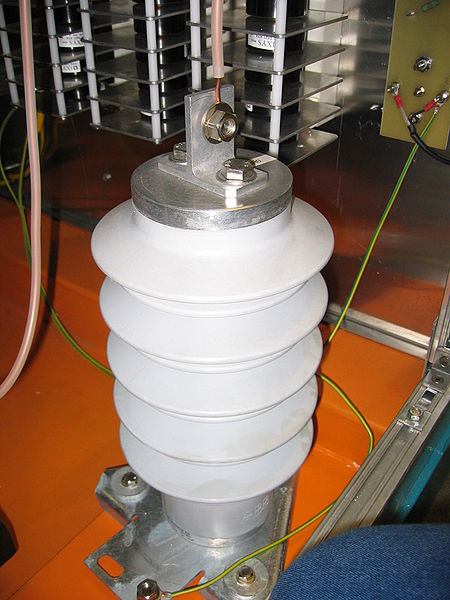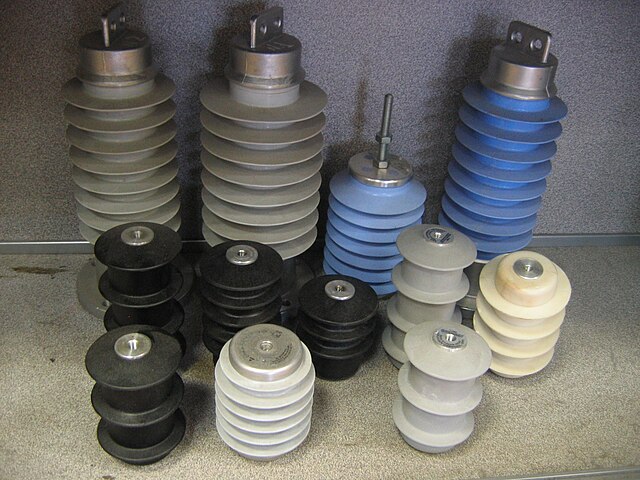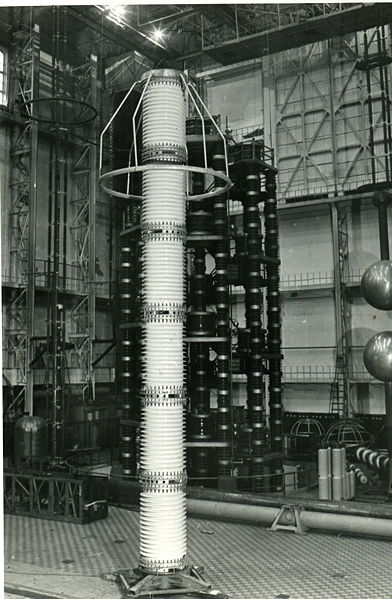A varistor is a surge protecting electronic component with an electrical resistance that varies with the applied voltage. It has a nonlinear, non-ohmic current–voltage characteristic that is similar to that of a diode. Unlike a diode however, it has the same characteristic for both directions of traversing current. Traditionally, varistors were indeed constructed by connecting two rectifiers, such as the copper-oxide or germanium-oxide rectifier in antiparallel configuration. At low voltage the varistor has a high electrical resistance which decreases as the voltage is raised. Modern varistors are primarily based on sintered ceramic metal-oxide materials which exhibit directional behavior only on a microscopic scale. This type is commonly known as the metal-oxide varistor (MOV).
Metal-oxide varistor manufactured by Siemens & Halske AG.
Western Electric 3B varistor made in 1952 for use as click suppressor in telephone sets
Western Electric Type 44A varistor for click suppression, mounted on a U1 telephone receiver element manufactured in 1958.
High voltage varistor
A surge protector (or spike suppressor, surge suppressor, surge diverter, surge protection device or transient voltage surge suppressor is an appliance or device intended to protect electrical devices in alternating current circuits from voltage spikes with very short duration measured in microseconds, which can arise from a variety of causes including lightning strikes in the vicinity.
Surge Protection Device SPD for installation in a low-voltage distribution board.
A power strip with built-in surge protector and multiple outlets
Surge arresters
Large surge arrester








